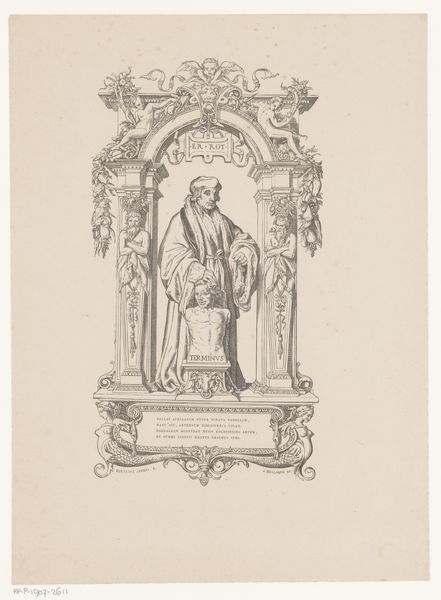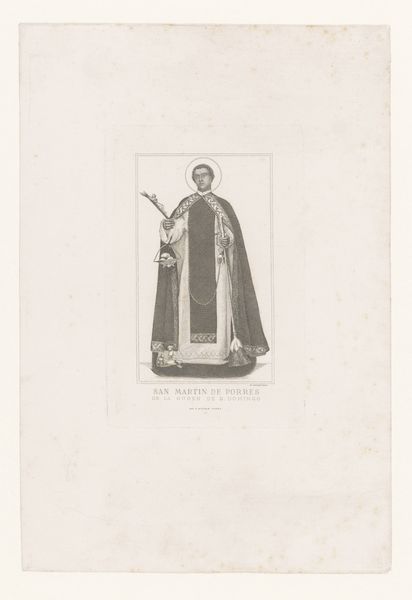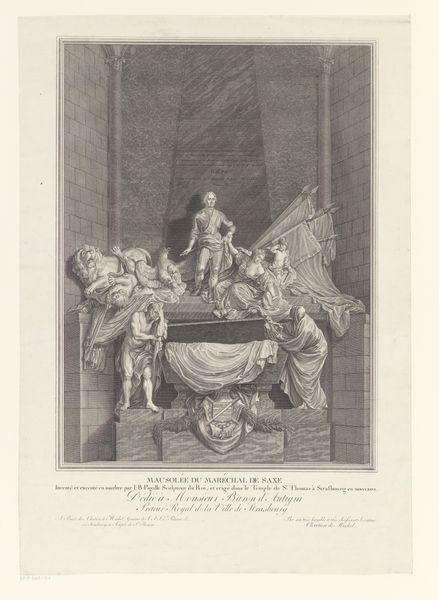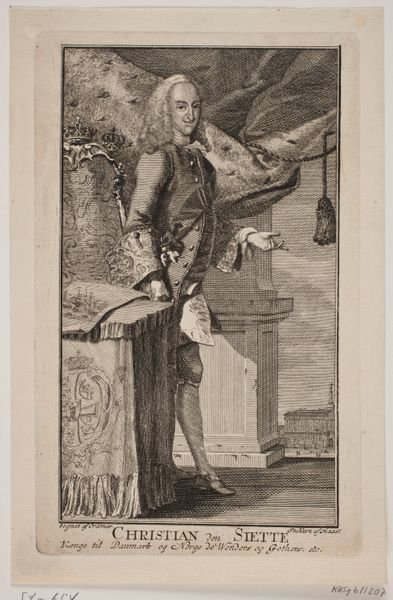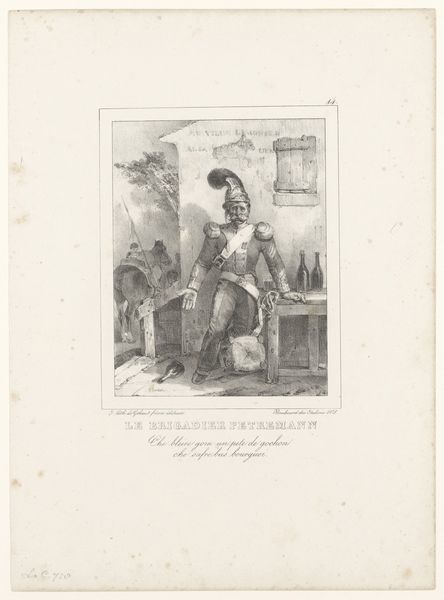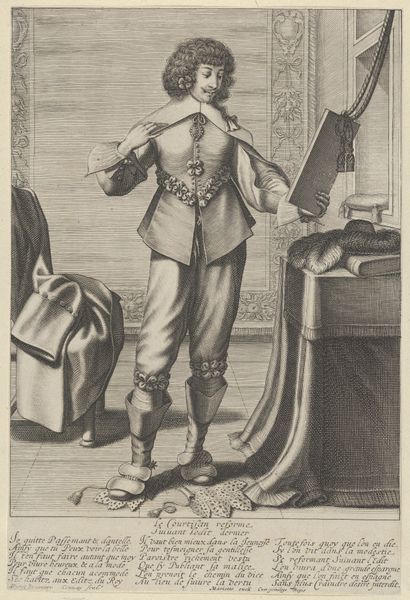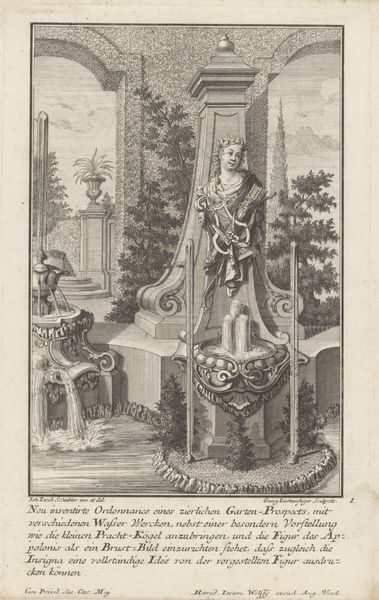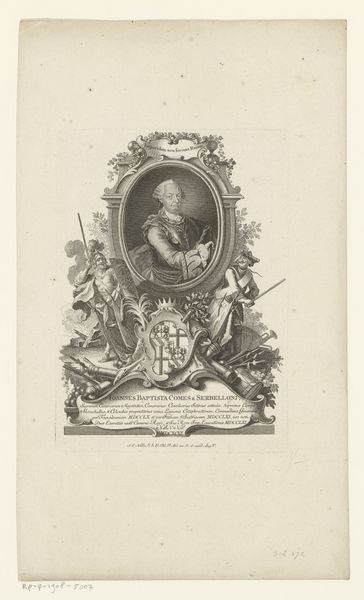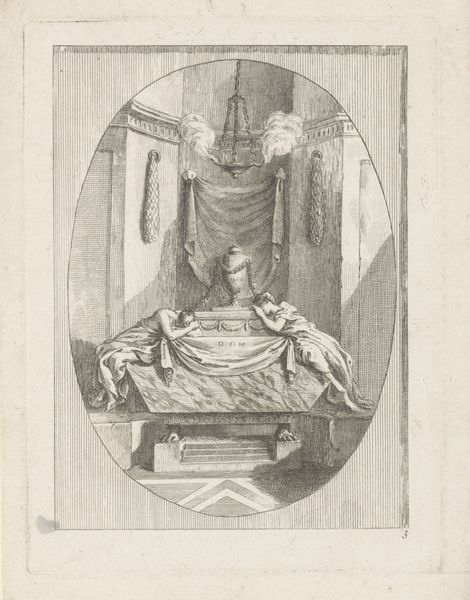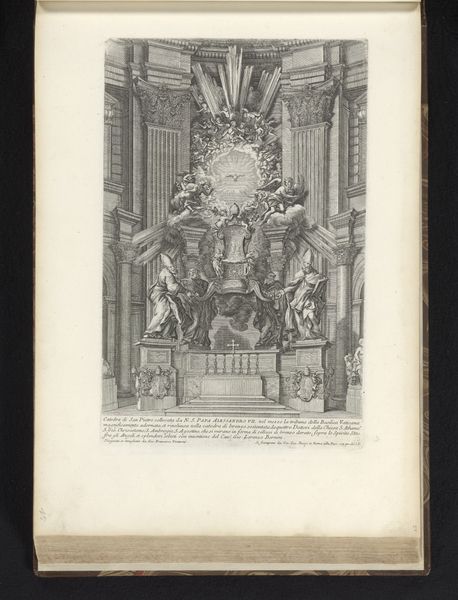
drawing, pen
#
portrait
#
drawing
#
narrative-art
#
pen
#
history-painting
#
academic-art
Dimensions: height 275 mm, width 215 mm
Copyright: Rijks Museum: Open Domain
Editor: This drawing from 1884, titled "Herdenking moord op Willem van Oranje, 1584-1884" by Johan Michaël Schmidt Crans, commemorates the assassination of William of Orange. It's rendered in pen and ink, and the subject seems to command attention, though there is some visual chaos that detracts from an immediate impression. What do you make of it? Curator: The strength of this work lies in its masterful use of line and form, qualities we cannot ignore if we are to unlock meaning. Observe the intricate hatching used to define the figure's armor, creating a palpable sense of depth and texture. How would you characterize the use of positive and negative space? Editor: It feels unbalanced, almost like the figure and architecture aren't quite connected. The lines are a little frantic, in a way. Curator: Precisely. The disjunction you perceive, where foreground clashes against background, may emphasize tension between the subject, setting, and medium. Moreover, consider how the artist uses the pen to evoke light and shadow, manipulating them to shape the space within the image. Would you call this manipulation natural? Editor: No, it almost has an unnatural exaggeration to it. The artist wants to push contrast and volume, instead of realistically rendering what's there. Curator: Your eye notices! Even the composition directs us through strategic deployment of perspective and framing, doesn't it? It suggests narrative without literal representation. I'd add that each stroke of the pen bears expressive quality and guides our perception toward symbolic forms rather than purely representational depictions of people or objects. What about the use of ornament, the textual addition; how does that guide our experience with its presence or absence? Editor: This exercise of scrutinizing line, shape, and medium apart from external contexts offers another perspective for the artwork! Curator: Precisely. Understanding the foundational role these play enables you to decode more elusive messages hidden in the work itself.
Comments
No comments
Be the first to comment and join the conversation on the ultimate creative platform.
